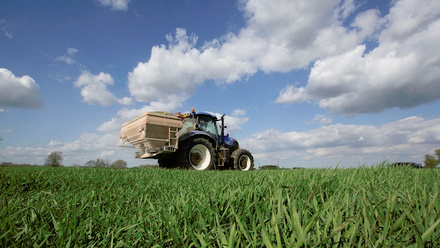CLP, GHS and ADR
Classification, labelling and packaging of substances and mixtures legislation
The purpose of this Regulation is to ensure a high level of protection of human health and the environment as well as the free movement of substances, mixtures and articles within scope of the controls by:-
(a) harmonising the criteria for classification of substances and mixtures, and the rules on labelling and packaging for hazardous substances and mixtures;
(b) providing an obligation for:
(i) manufacturers, importers and downstream users to classify substances and mixtures placed on the market;
(ii) suppliers to label and package substances and mixtures placed on the market;
(iii) manufacturers, producers of articles and importers to classify those substances not placed on the market that are subject to registration or notification under Regulation 1907/2006 on the Registration, Evaluation, Authorisation and Restriction of Chemicals (REACH);
c) providing an obligation for manufacturers and importers of substances to notify the European Chemicals Agency (ECHA) of such classifications and label elements if these have not been submitted to the Agency as part of a registration under Regulation 1907/2006;
d) establishing a list of substances with their harmonised classifications and labelling elements at Community level;
(e) establishing a classification and labelling inventory of substances, which is made up of all notifications, submissions and harmonised classifications and labelling elements referred to in points (c) and (d).
This Regulation shall not apply to the following:
(a) radioactive substances and mixtures within the scope of Council Directive 96/29/Euratom of 13 May 1996 laying down basic safety standards for the protection of the health of workers and the general public against the danger arising from ionising radiation;
(b) substances and mixtures which are subject to customs supervision, provided that they do not undergo any treatment or processing, and which are in temporary storage, or in a free zone or free warehouse with a view to re-exportation:
(c) non-isolated intermediates;
(d) substances and mixtures for scientific research and development, which are not placed on the market, provided they are used under controlled conditions in accordance with Community workplace and environmental legislation.
Article 1, paragraph 5 also states that this Regulation shall not apply to a number of substances and mixtures in the following forms, which are in the finished state, intended for the final user:
- veterinary medicinal products as defined in Directive 2001/82/EC;
- as an additive in feeding stuffs within the scope of Regulation (EC) No 1831/2003;
- in animal nutrition within the scope of Directive 82/471/EEC.
Application of Regulation 1272/2008 to the premixture and feed industry
In 2009, the UK premixture and feed industry accepted that feed additives and premixtures of feed additives were within scope of Regulation 1272/2008. Further to expert legal advice received in 2007, it was also accepted that whilst complementary feeds designed for direct feeding were out of scope, those designed for mixing into feed (i.e. not intended for the final user) were in scope.
Associated Legislation
Regulation 1272/2008 is implemented in the UK through The Classification, Labelling and Packaging of Chemicals (Amendments to Secondary Legislation) Regulations 2015.
A Q&A document on the scope and exemptions of the CLP controls is available on the ECHA website. This includes the following:-
Q - “Will food and feeding stuffs have to be classified, labelled and packaged according to CLP, and their substances notified to the Classification and Labelling Inventory?”
A - According to Article 1(5)(e) of CLP, the CLP Regulation does not apply to food and feeding stuffs, as defined in Regulation (EC) No 178/2002 (Food Safety Regulation), and which are in the finished state intended for the final user. The CLP Regulation does not define the term "final user", but Regulation (EC) No 178/2002 defines "final consumer" as "the ultimate consumer of a foodstuff who will not use the food as part of any food business operation or activity". The same concept can be applied in the context of CLP. This also applies to the use of a substance or a mixture
- as a food additive in foodstuffs within the scope of Directive 89/107/EEC,
- as a flavouring in foodstuffs within the scope of Directive 88/388/EEC and Decision 1999/217/EC,
- as an additive in feeding stuffs within the scope of Regulation (EC) No 1831/2003
or
- in animal nutrition within the scope of Directive 82/471/EEC.
Since Article 1(5)(e) of CLP only refers to food or feeding stuffs in the final state intended for the final user substances or mixtures used in food or feeding stuffs at any stage of production are not exempt from CLP and therefore must be classified, packaged, labelled and notified. For instance, the CLP Regulation applies to the manufacturer/supplier of a food additive (e.g. preservatives) who supplies the substance to another company that uses it in the production of food. In such a case, the chemical substance in the form in which it is supplied should not be regarded as a product being in the finished state intended for the final user, and the exemption stated in Art. 1(5)(e) CLP is not applicable (see also FAQ ID=179).
The Health and Safety Executive (HSE), as the UK’s competent authority for this legislation, also provides guidance on the CLP controls.
Other associated legislation
1. Global Harmonised System
As stated in the HSE guidance, the CLP Regulation adopts the United Nations’ Globally Harmonised System on the classification and labelling of chemicals (GHS) across all European Union countries, including the UK.
2. The Carriage of Dangerous Goods and Use of Transportable Pressure Equipment Regulations 2009 – ADR
The Carriage of Dangerous Goods and Use of Transportable Pressure Equipment Regulations 2009 (CDG Regs) and the European Agreement (“Accord européen relatif au transport international des marchandises dangereuses par route”, known as ADR) which together regulate the carriage of dangerous goods by road are highly prescriptive. As with the GHS, the ADR is global legislation driven by the UN and all nations can comment on it.
The GB regulations were substantially restructured in 2009 with direct referencing to ADR for the main duties. Amending regulations were made in 2011, mainly to reflect changes to the EU Transportable Pressure Equipment Directive. Detailed information is available from the HSE.



